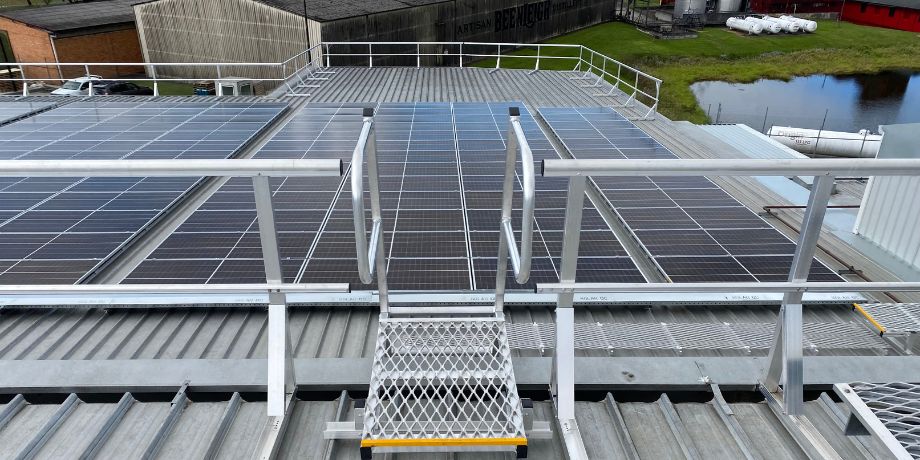
Engineering controls focus on fall prevention and are a proven way to reduce risks when working on roofs. Here’s a run down of what kind of controls you can deploy and how they help keep you safe.
The value of a fall prevention focus
Even with fall arrest systems in place and fall protection gear on, falls from height are serious. That’s why – if you have to work at height – it’s so important to take every possible precaution.
The best way to do this is by deploying higher-level height safety controls. These earlier interventions are designed to prevent falls from happening in the first place. This is in contrast with lower level controls – like fall arrest systems and PPE – which will catch and protect you if you fall, but won’t stop you from falling.
Among these higher-level controls are what we call “engineering controls”. Engineering controls are put in place to physically separate and/or isolate you from trip and fall hazards. They do require some planning and investment upfront. But once operational, engineering controls provide a safer work-at-height environment for all users, now and into the future.
Engineering controls are also less reliant on individuals being height safety trained. And sometimes even negate the need to wear or use specialist height safety gear and equipment. Which makes it easier, cheaper and more efficient for staff, contractors and maintenance teams to work-at-height safely and get the job done.
Five controls that optimise for fall prevention
Now that you know why engineering controls matter, here’s a run down of what kind of engineering controls you can deploy and how they work.
1. Guardrails for edge protection
To prevent falls when working at or close to the edge of your roof
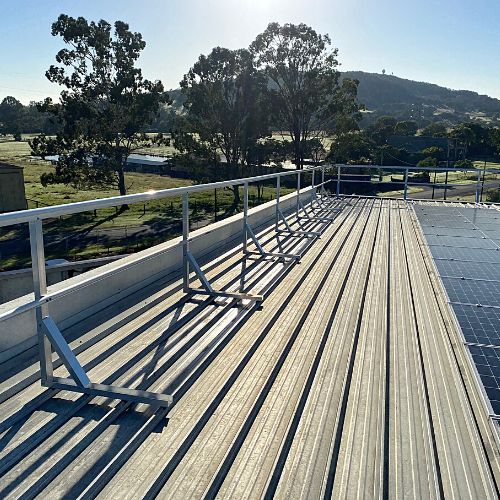 | 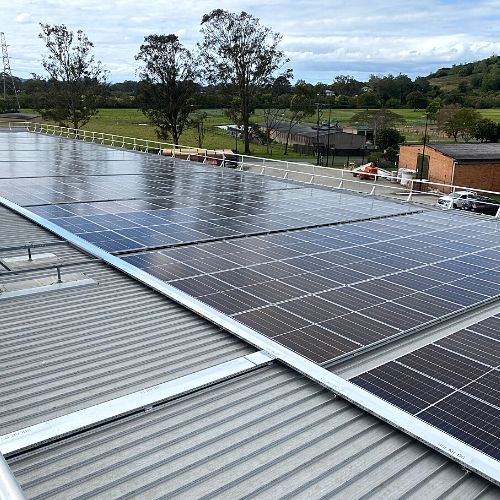 |
Guardrails are vertical barriers (with horizontal handrails) that can be applied to both pitched and flat roofs and provide a physical barrier between you and the edge of the roof.
This enables safe movement around the perimeter of your roof structure – whether it be for plant installation, inspection, repairs or maintenance.
With a guardrail protected roof, your workforce can also usually get to work without any specialist training and often without specialist gear or equipment – another time and cost saving
2. Walkways for directed access
To enable safe movement across the roof and to/from roof plant
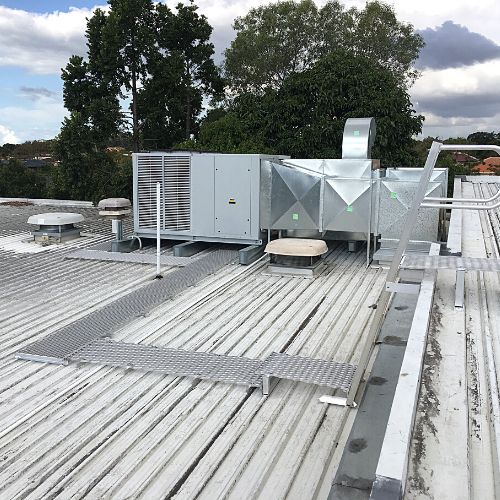 | 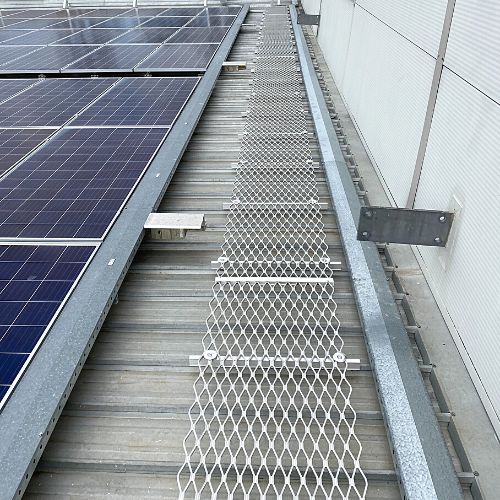 |
Engineering controls can also take the form of bespoke rooftop mounted walkways.
Roof walkways come in a variety of finishes (aluminium, galvanised steel, anti-slip) and can be retro-fitted to any existing roof regardless of roof profile or materials. They can also be combined with guardrails and handrails (for extra protection and balance).
A roof walkway can help you navigate hazards and obstacles (eg chimneys, skylights) and follow a safe pathway to and from roof plant and other rooftop work areas.
They’re an ideal fixture to consider when installing new plant that will require ongoing maintenance (eg solar panels) as they keep rooftop traffic on the walkway and not on the roof sheeting. This also reduces the risk of falling through fragile roof material (eg around Skylights) and/or incurring damage to your investment.
3. Raised platforms to avoid hazards
To get up and over fragile surfaces, obstacles, trip and fall hazards
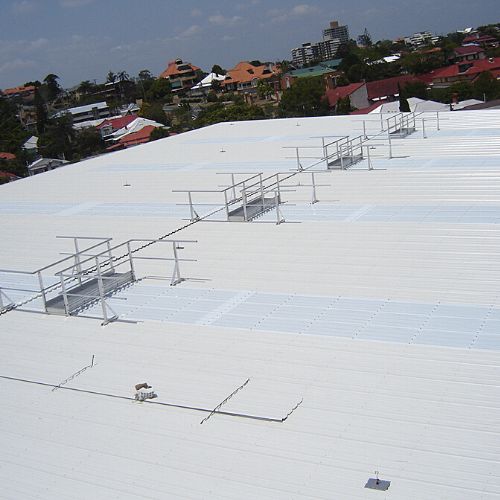 | 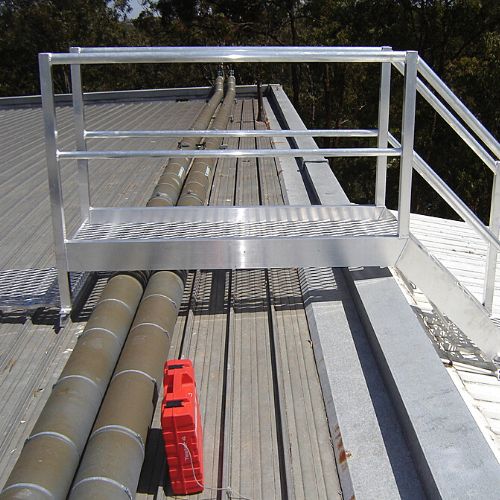 | 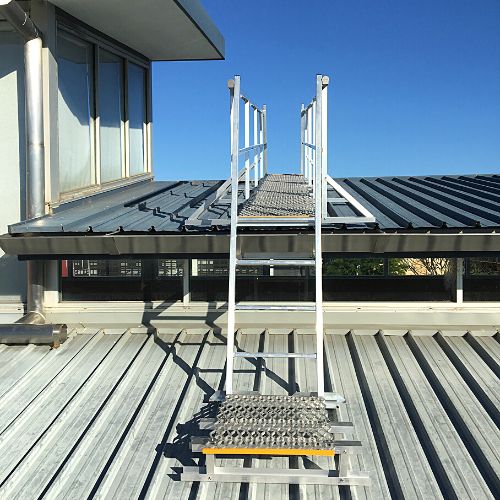 |
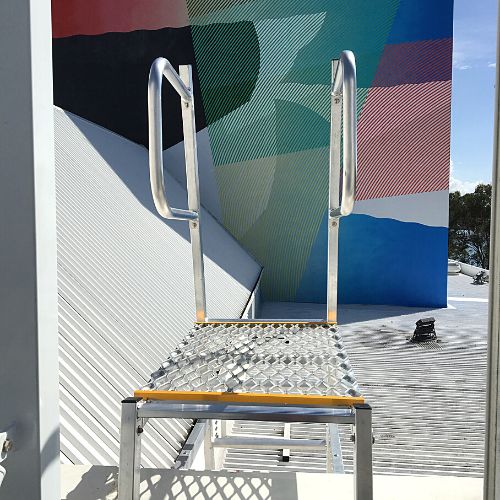 | 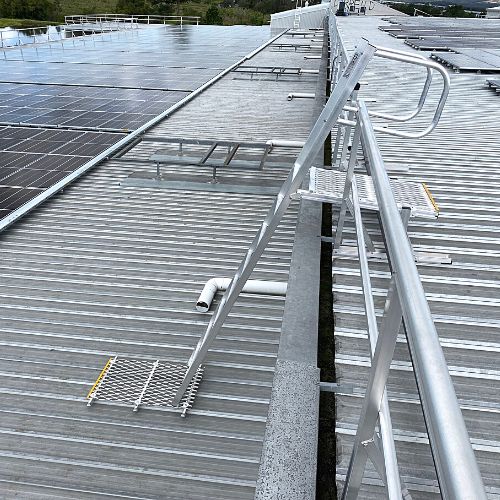 | 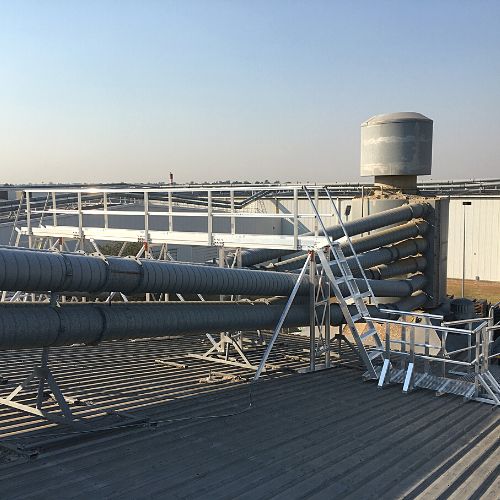 |
Engineering controls can be used to navigate fragile roof areas and changing roof levels as well as a variety of rooftop obstacles and trip hazards (such as pipes or cabling).
Whilst more indirect, this is still a critical component of fall prevention – as anyone who’s mis-stepped whilst working on a roof will know.
The objective typically is to take the user over-and-above the hazard via a bespoke crossover. Typically that crossover starts with a raised platform of some kind which may then be combined with steps or stairs to create a bridge. Guardrails and handrails may also be incorporated.
4. Fall prevention for fragile surfaces
To prevent falling through fragile roof areas (eg near skylights)
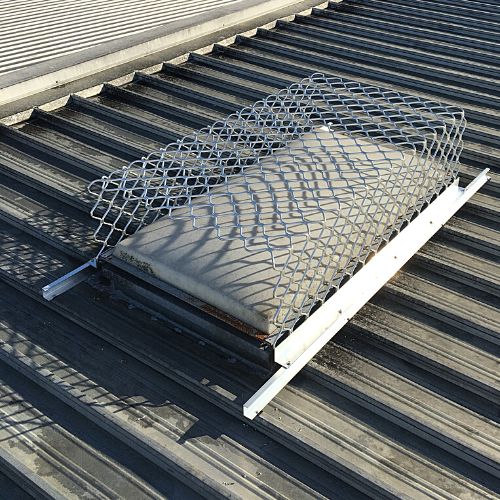 | 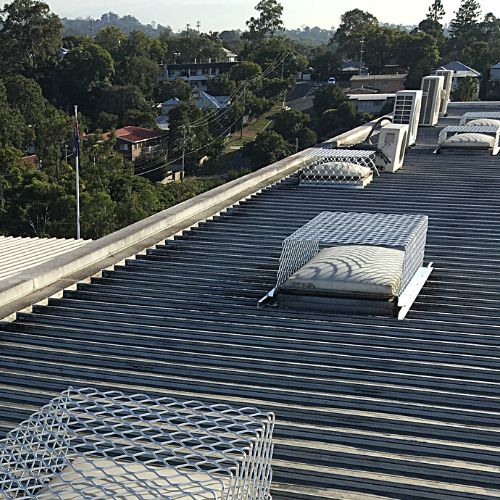 |
Vulnerable areas of your roof need additional protection from roof traffic and activity.
A common example is the area around skylights where surfaces are potentially more fragile. This poses a risk to anyone working directly around this area of falling through the roof and/or the skylight itself. It also makes this part of your roof more prone to damage and potential leaks.
Using walkways and/or crossovers to redirect traffic and activity away from these weak spots is ideal. But where not possible – skylight fall prevention covers and/or other bespoke fitted barriers (in the form of mesh panels or elevated wire cages) provide an important extra layer of protection.
5. Guardrails for restricted access
To prevent falling through roof voids, gaps and openings
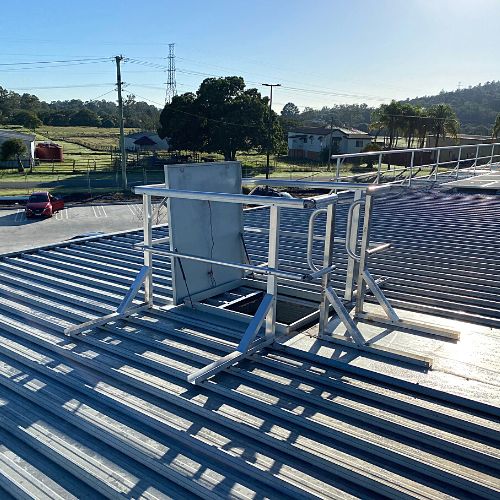 | 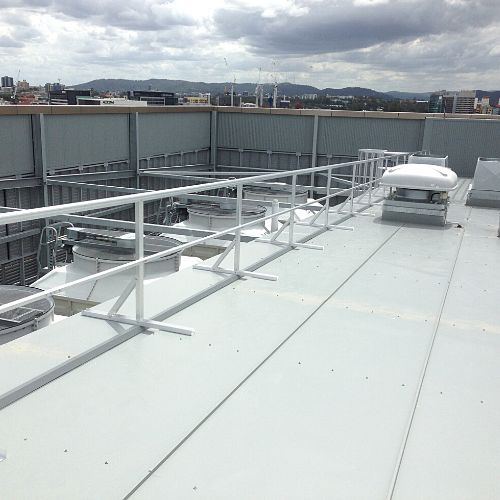 |
As well as providing edge protection, guardrails are a life-saving fall prevention barrier near internal roof voids (eg atriums) and between different roof levels. They can also be applied to prevent users from falling through open roof hatches.
Roof hatches provide access from inside the building onto the rooftop. Once installed, they’re typically used by all staff, contractors and maintenance teams who need roof access. This makes roof hatches a high traffic area.
Whilst a lot of attention is rightly paid to getting people safely onto the roof – getting safely back inside is just as important. Tripping and falling down through roof hatches is not unheard of and can be very dangerous. Guardrails around your roof hatch prevent that from happening.
The case for engineering controls
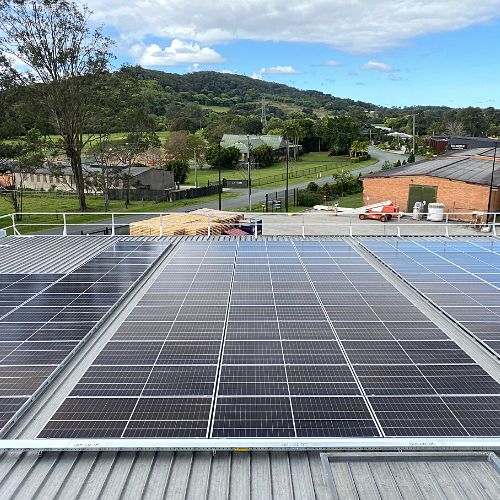 | 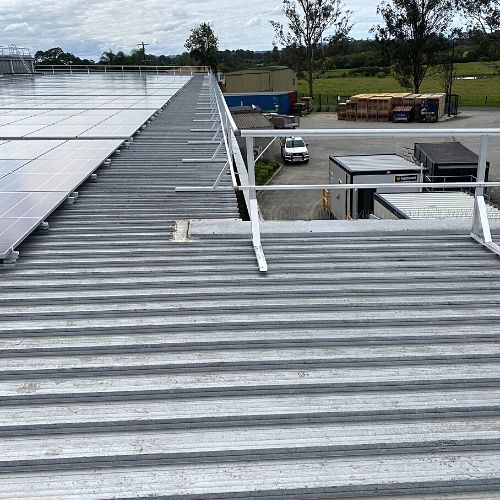 |
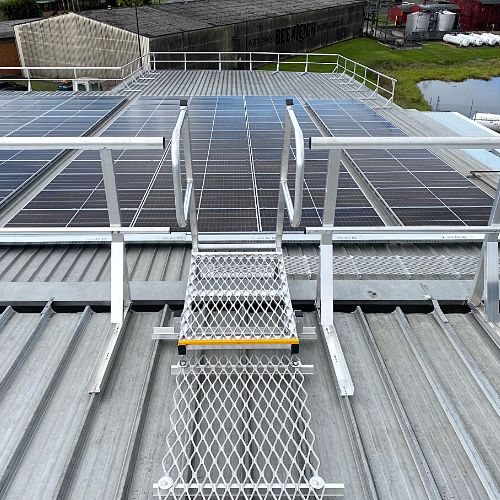 | 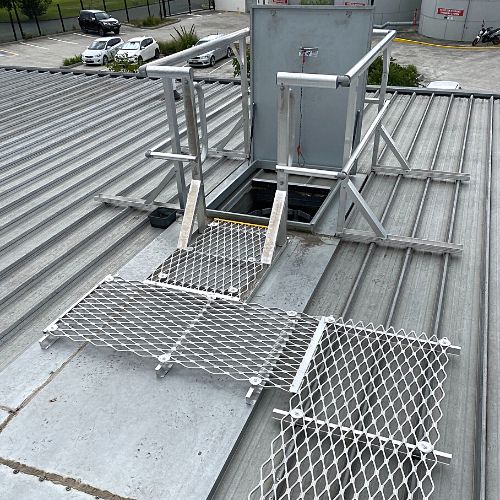 |
Download our recent installation case study to see how user-friendly engineering controls optimised for roof safety and fall prevention, improved work efficiency and made the maintenance of our client’s new solar panels safer and easier
Fall-proof your roof with us
Higher-level engineering controls focus on earlier interventions to prevent falls from happening. Once in place, they make work-at-height safer for everyone – regardless of their level of height safety training and access to specialist equipment. In the long run, they save time and money as well as lives.
Want to re-engineer your roof safety? Talk to us today.
